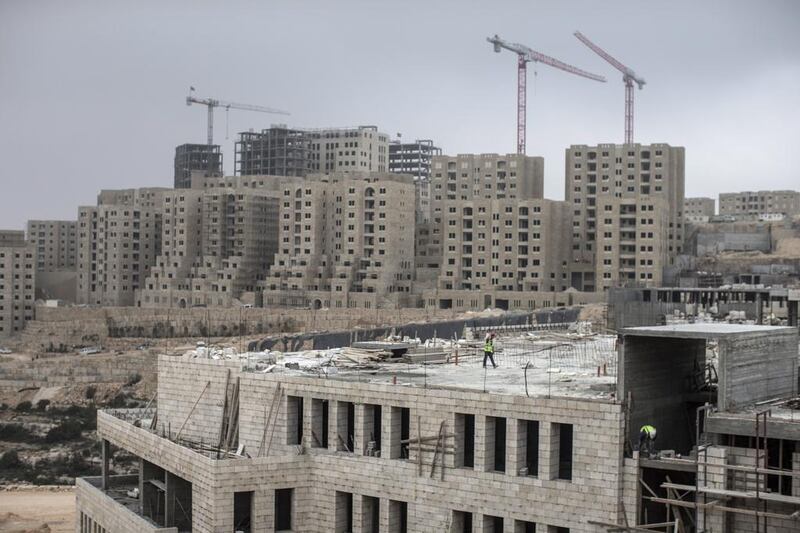JERUSALEM // The population of Jewish settlers in the occupied West Bank has continued to surge during Prime Minister Benjamin Netanyahu’s years in office, growing at more than twice the pace of Israel’s overall population.
Settlement growth was strong on both sides of Israel’s separation barrier, official figures showed.
The figures reflect Mr Netanyahu’s continued support for settlement construction, even while repeatedly stating his commitment to the eventual establishment of an independent Palestinian state as part of a future peace agreement.
While Israeli leaders of all political persuasions have built settlements for decades, the United States and other western allies have increasingly little patience for their construction.
From the beginning of 2009 – Mr Netanyahu returned to office in March that year – until the beginning of 2014, the Jewish settler population in the West Bank grew 23 per cent, to 355,993 people. In comparison, the overall Israeli population has grown 9.6 per cent to just over 8 million in that time. Figures for 2014 are not expected before late next year.
The rate of settler population growth has slowed slightly under Mr Netanyahu, from 31 per cent during the previous five years under his predecessors Ariel Sharon and Ehud Olmert. Mr Olmert in particular took relatively little heat for the settlements because he was seen as a moderate.
In all, the settler population has more than doubled in the 21 years since Israel and the Palestinians have been engaged in an on-and-off peace process intended to reach a two-state solution.
Since Israel seized the West Bank in 1967, prime ministers of all political affiliations have allowed – and sometimes encouraged – settlement of the territory.
The Palestinians say all Israeli construction in the West Bank and east Jerusalem is illegal – a position supported by the international community.In a situation that challenges Israel’s claims to being a democracy, the more than 2 million Palestinians who live in the West Bank cannot vote for the Israeli government that controls much of their lives, while Jewish settlers can.
Mr Netanyahu has faced repeated criticism from the US over controversial construction plans. But defence minister Moshe Yaalon suggested last week that the government would expand settlements even further if not for US pressure.
“We are very, very careful not to push the envelope too much,” Mr Yaalon said. “This [US] administration won’t be around forever and I hope it is temporary.”
Despite this, however, Mr Yaalon said that settlements are growing faster than “any other part of the country.”
The latest figures from Israel’s Central Bureau of Statistics confirm Mr Yaalon’s claims.
Shortly after taking office, Mr Netanyahu gave a landmark speech endorsing Palestinian statehood and reversing his previous opposition. But his government has refused to stop settlement construction, with the exception of a 10-month period in 2009 and 2010 that was meant to spur peace talks.
US-brokered negotiations have since collapsed, largely as a result of continued settlement building.
* Associated Press





